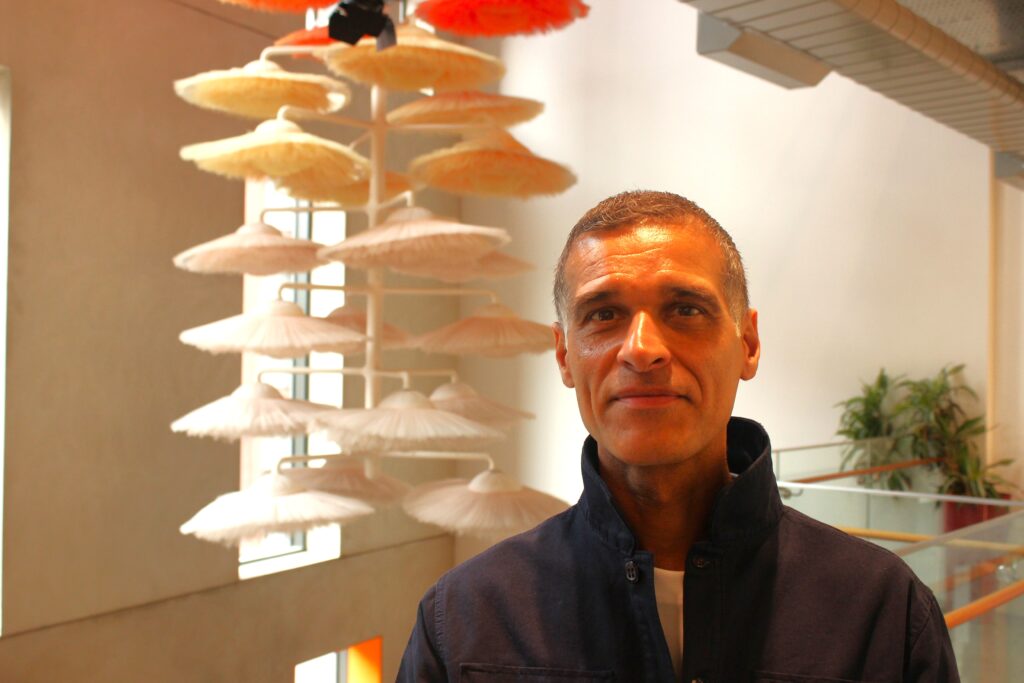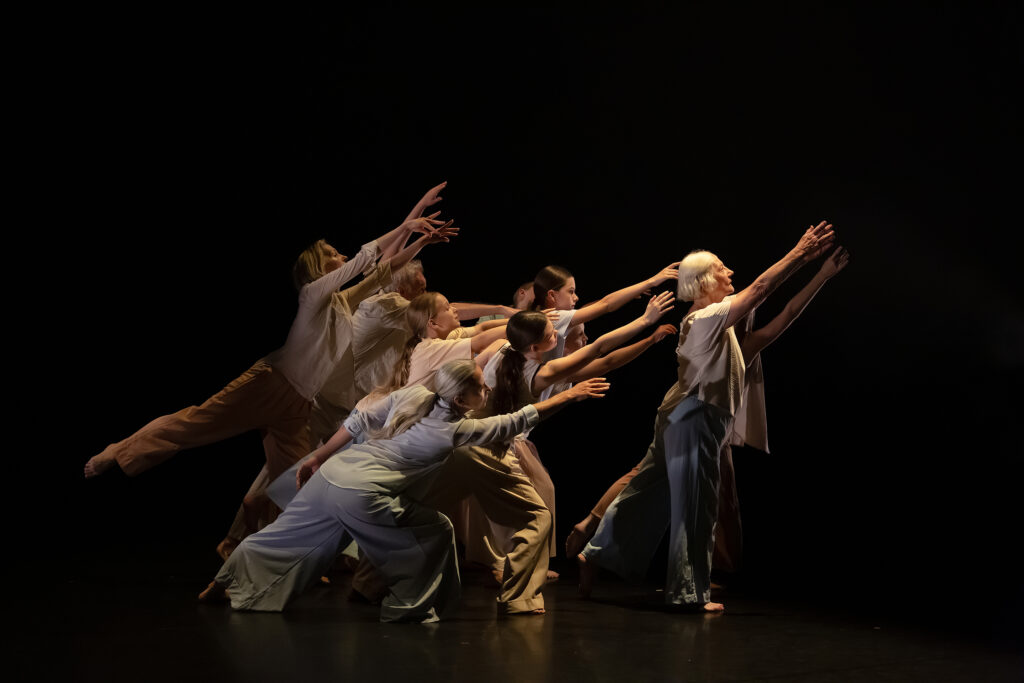National Dance Centres for Advanced Training (CATs) celebrate 20 year anniversary
This year, the National Dance Centres for Advanced Training (CATs) celebrate 20 years of providing dance pre-vocational training to thousands of young people.
As featured in One Dance UK Magazine (Spring 2025), Veronica Jobbins MBE reflects on the powerful impact of the scheme; “This programme has been instrumental in creating and inspiring future generations of world class dancers and choreographers and by actively removing barriers to access, ensure they come from a range of diverse (and not the usual/traditional dance) backgrounds.
This unique programme that nurtures young dancers for a lifetime in dance deserves to be celebrated and supported for its past success and pivotal role in the dance ecosystem of the future.”
The National CATs have been an extraordinary success story, although following the loss of outreach funding, there were fears that the wider programme could be at risk. DanceEast has been working closely with colleagues at 10 other National Dance CATs across England on a campaign to secure continued investment.
The Department for Education announced in December 2024 that it would cease investing in supporting grants under the Music and Dance Scheme (MDS). For DanceEast, this meant losing outreach funding for our established CAT programme.
Part of a national programme, DanceEast’s CAT enables children and young people from all backgrounds across East Anglia to participate in high-quality, prevocational dance through the provision of means-tested bursaries. It is a key pathway to careers in dance; the outreach funding reaching 16,525 children and young people nationally in 2023 to 2024.
Dance is vital within the performing arts, which collectively generate £11.2 billion a year for the UK economy. The CAT programme supports over of bursary holders coming from low-income households.
An estimated 73% of National CAT graduates progress to higher or further education in dance. Between 2019 and 2024, CAT graduates invested an estimated £11.59 million in tuition fees, equating to a 23% return on the Government’s £1.9 million annual CAT bursary spend. Alumni from the scheme have gone on to perform with high-profile professional dance companies including Akram Khan Dance Company, Northern Ballet, and Matthew Bourne’s New Adventures.
“My family wouldn’t have been able to give me the opportunity to go to CAT if it had not been for the financial support. I would have never found the love for dance that I have now.” – Graduate Joey Barton, performer with BalletBoyz.
For Onedance UK, Veronica Jobbins MBE said that “This unique programme that nurtures young dancers for a lifetime in dance deserves to be celebrated and supported for its past success and pivotal role in the dance ecosystem of the future.”
After months of collective lobbying, which saw hundreds of letters written to MPs, the Department for Education confirmed 2025-26 funding for student bursaries for the National Dance CATs in early June.
The Guardian announced the news about confirmed funding, reporting that “the centres use outreach programmes to attract dancers from outside traditional backgrounds in an attempt to make dance, which has had issues with elitism for decades, more diverse and equitable.
… the Department for Education confirmed to the campaigners, including alumni, students and parents, that funding for the centres had been secured for another 12 months.”
As part of the campaign, prominent figures from across the sector, including Sir Matthew Bourne OBE, Dame Arlene Phillips DBE, Sir Alistair Spalding CBE and Anthony Van Laast MBE, spoke out in support.
“We must protect the Dance CATs. The small investment required to fund this programme annually has a substantial impact in terms of the opportunities it provides to young people, and the economic return. The future Artistic Director of Sadler’s Wells… is very likely amongst the current cohort.” – Sir Alistair Spalding CBE, Artistic Director & Chief Executive, Sadler’s Wells
“It is painful to imagine a world where this amazing achievement and significant investment… goes to waste; a world in which there can be no more Billy – or Betty – Elliots.” – Sir Matthew Bourne OBE, Artistic Director, New Adventures
DanceEast’s Artistic Director and CEO, Brendan Keaney OBE also said that the National Dance CATs are “beacons across the country, where young people undertake high-quality specialist dance training alongside regular schooling. It is reassuring that the government has protected this important pathway to dance careers for another year – a hopeful sign of their commitment to dance, and its importance to our growing creative sector.”
Speaking to Arts Professional, Clare Connor, Chief Executive of The Place and London Contemporary Dance School said: “We are pleased to see the government have listened … we will build on this good news and work to secure the long-term future of the programme.
This is an encouraging step in the government’s commitment to safeguarding the pathways to careers in dance”, adding that it gave “a positive signal of the recognition of dance’s contribution to our thriving and growing dance ”.
But the work is not over. Despite relief that the funding for bursaries is secure for 2025-26, concerns persist about the long-term future of the dance centres. We, and our fellow providers, artists, educators and friends encourage Government to go further. A commitment must be made to restore the outreach scheme so that dance can be made available to everyone.
Reach
- Thousands of young dancers trained across England since 2004.
- 900 students train each year (2023/24).
- 68% bursary recipients; 60% full bursaries, 40% partial.
- 51% from households earning under £25,000 annually (2023/24)
- 52% first generation in family to enter higher education (2020/24)
- 26% identify as Global Majority (2023/24)
- 18% have a declared disability.
- 394 parliamentary constituencies served, including many with limited cultural access in areas with high rates of childhood poverty.
Higher Education (Academic Year 2024/25)
- 142 students graduate annually from CAT programmes.
- CAT alumni represent 26-48% at 4 leading conservatoires: Northern School of Contemporary Dance, Trinity Laban, London Contemporary Dance School at The Place and Rambert School of Ballet and Contemporary Dance.
- CAT students contribute an estimated £1 million in annual tuition income to these 4 institutions.
Economic & Social Contribution
- 28% of all young people benefitting from the Music and Dance Scheme nationally are supported by Dance CATs.
- CAT graduates are members of 80+ professional companies, many internationally renowned and sector-leading.
- 28 full-time staff employed by centres and 550 artists each year.
- 84 new works annually produced by 70 choreographers.
- Takes up 13% average studio space use
- Contributes almost 50,000 hours of employment in the dance sector.
- Represents 14% of total organisational income








